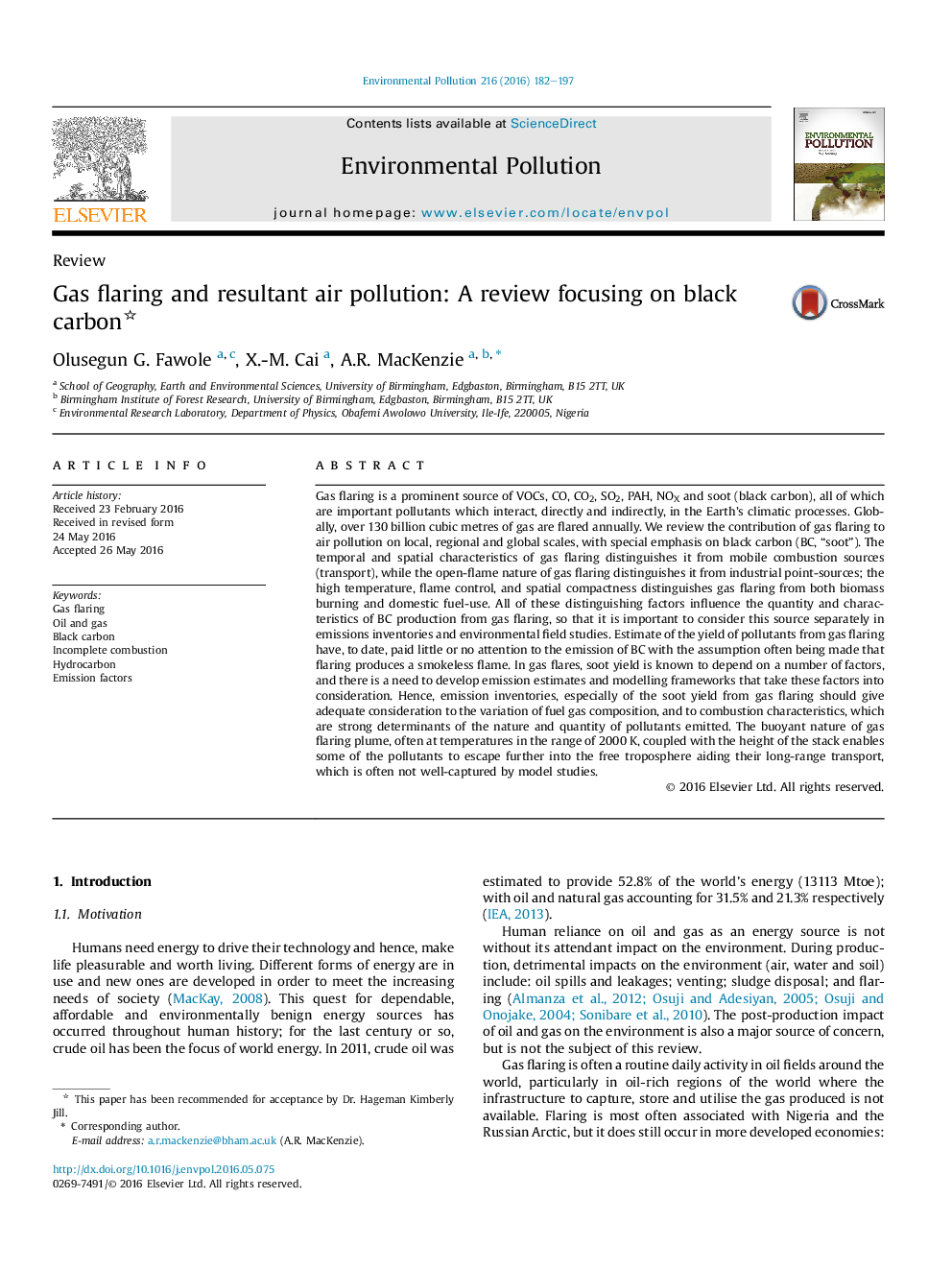| کد مقاله | کد نشریه | سال انتشار | مقاله انگلیسی | نسخه تمام متن |
|---|---|---|---|---|
| 6315796 | 1619157 | 2016 | 16 صفحه PDF | دانلود رایگان |
عنوان انگلیسی مقاله ISI
Gas flaring and resultant air pollution: A review focusing on black carbon
ترجمه فارسی عنوان
سوختگی گاز و آلودگی هوا ناشی از آن: بررسی با تمرکز بر کربن سیاه
دانلود مقاله + سفارش ترجمه
دانلود مقاله ISI انگلیسی
رایگان برای ایرانیان
کلمات کلیدی
گاز پخت نفت و گاز، کربن سیاه، احتراق ناقص، هیدروکربن فاکتورهای انتشار،
موضوعات مرتبط
علوم زیستی و بیوفناوری
علوم محیط زیست
شیمی زیست محیطی
چکیده انگلیسی
Gas flaring is a prominent source of VOCs, CO, CO2, SO2, PAH, NOX and soot (black carbon), all of which are important pollutants which interact, directly and indirectly, in the Earth's climatic processes. Globally, over 130 billion cubic metres of gas are flared annually. We review the contribution of gas flaring to air pollution on local, regional and global scales, with special emphasis on black carbon (BC, “soot”). The temporal and spatial characteristics of gas flaring distinguishes it from mobile combustion sources (transport), while the open-flame nature of gas flaring distinguishes it from industrial point-sources; the high temperature, flame control, and spatial compactness distinguishes gas flaring from both biomass burning and domestic fuel-use. All of these distinguishing factors influence the quantity and characteristics of BC production from gas flaring, so that it is important to consider this source separately in emissions inventories and environmental field studies. Estimate of the yield of pollutants from gas flaring have, to date, paid little or no attention to the emission of BC with the assumption often being made that flaring produces a smokeless flame. In gas flares, soot yield is known to depend on a number of factors, and there is a need to develop emission estimates and modelling frameworks that take these factors into consideration. Hence, emission inventories, especially of the soot yield from gas flaring should give adequate consideration to the variation of fuel gas composition, and to combustion characteristics, which are strong determinants of the nature and quantity of pollutants emitted. The buoyant nature of gas flaring plume, often at temperatures in the range of 2000Â K, coupled with the height of the stack enables some of the pollutants to escape further into the free troposphere aiding their long-range transport, which is often not well-captured by model studies.
ناشر
Database: Elsevier - ScienceDirect (ساینس دایرکت)
Journal: Environmental Pollution - Volume 216, September 2016, Pages 182-197
Journal: Environmental Pollution - Volume 216, September 2016, Pages 182-197
نویسندگان
Olusegun G. Fawole, X.-M. Cai, A.R. MacKenzie,
